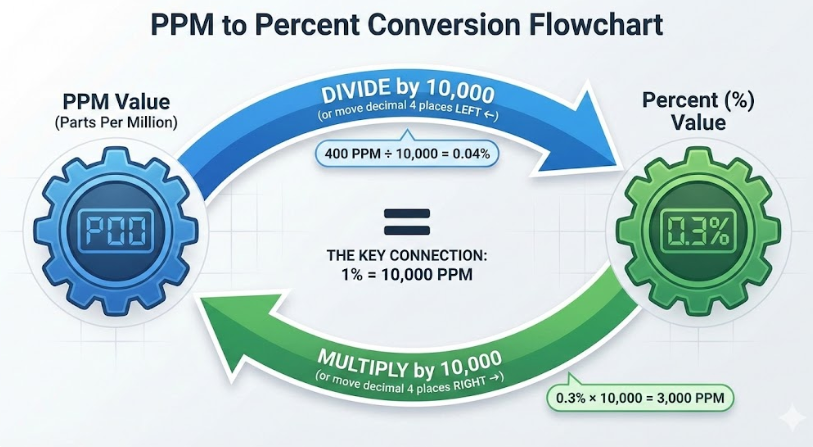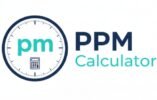PPM ↔ Percent Calculator
Convert between Parts Per Million (PPM) and Percentage (%) precisely and instantly.
PPM → Percentage (%)
Percentage (%) → PPM
Percent = PPM ÷ 10,000
PPM = Percent × 10,000
Parts Per Million to Percent Calculator – Accurate PPM → % Conversion
Quickly convert PPM (parts per million) to percent (%) using this accurate calculator. Ideal for chemistry, water treatment, industry, and concentration calculations.
The PPM to Percent Calculator is a practical tool for converting between parts per million (PPM) and percentage values. This calculator is especially useful for students, laboratory professionals, water quality experts, and anyone working with chemical concentrations or environmental data.
By entering a value in either PPM or percent, you can instantly see the equivalent in the other unit, making calculations faster and more reliable.
How the PPM to Percent Calculator Works
The calculator uses simple, universally accepted formulas:
- To convert PPM to percent:
Percent = PPM ÷ 10,000 - To convert percent to PPM:
PPM = Percent × 10,000
Just enter your value in the appropriate field and click the conversion button. The result appears instantly, helping you avoid manual errors and saving time.
Why Accurate Conversion Matters
Accurate conversion between PPM and percent is essential in many fields:
- Water testing: Determining safe levels of chemicals or contaminants in drinking water.
- Laboratory analysis: Preparing solutions with precise concentrations.
- Agriculture: Mixing fertilizers or nutrients for optimal plant growth.
- Industrial applications: Monitoring air quality or chemical processes.
If you want to learn more about PPM and its applications, visit our What is PPM? and PPM Calculation Examples pages.
Verifying Your Results
To ensure your conversions are correct:
- Double-check your input: Make sure you enter the value in the correct field (PPM or percent).
- Review the formula: The calculator displays the formula used for each conversion, so you can verify the math.
- Compare with examples: See PPM Calculation Examples for real-world scenarios.
If you have questions about the formulas or want to see step-by-step calculations, our How to Calculate PPM Step-by-Step guide can help.

Frequently Asked Questions
What is PPM?
PPM stands for “parts per million.” It is a unit of measurement used to express very dilute concentrations of substances. For more details, see What is PPM?.
When should I use percent instead of PPM?
Percent is best for larger concentrations, while PPM is ideal for very small amounts. For example, 0.01% is equal to 100 PPM. Learn more about choosing the right unit in our PPM Formula Variations.
Can I use this calculator for water testing?
Yes, this calculator is perfect for converting water test results. For more on water quality, see PPM Standards for Drinking Water and Safe PPM Levels Drinking Water.
What if I get an unexpected result?
Check your input for typos or misplaced decimals. If you need help, our PPM FAQ covers common issues and troubleshooting tips.
Best Practices for PPM and Percent Calculations
- Always use the correct units: Mixing up PPM and percent can lead to significant errors.
- Keep your data organized: Record both the original value and the converted result for reference.
- Use certified equipment: For laboratory or field measurements, use calibrated instruments to ensure accuracy.
- Stay updated: Standards and guidelines can change. Visit our PPM Conversion Table for the latest reference values.
Related Tools and Resources
Explore more calculators and guides to support your work:
- PPM to Weight Calculator
- PPM Solution Calculator
- PPM for Water Testing
- PPM Best Practices for Lab Work
For a full list of tools, visit our Calculator .
Why Use Our Calculator?
Our PPM to Percent Calculator is designed for clarity, speed, and accuracy. It is regularly updated to reflect current standards and user feedback. Whether you are a student, professional, or hobbyist, you can trust this tool to deliver reliable results every time.
If you have suggestions or need further assistance, please reach out through our contact page. We are committed to helping you achieve accurate and efficient conversions in your work.
Make your calculations easy and error-free. Use the PPM to Percent Calculator for instant, reliable conversions and explore our educational resources to deepen your understanding of chemical concentrations.
